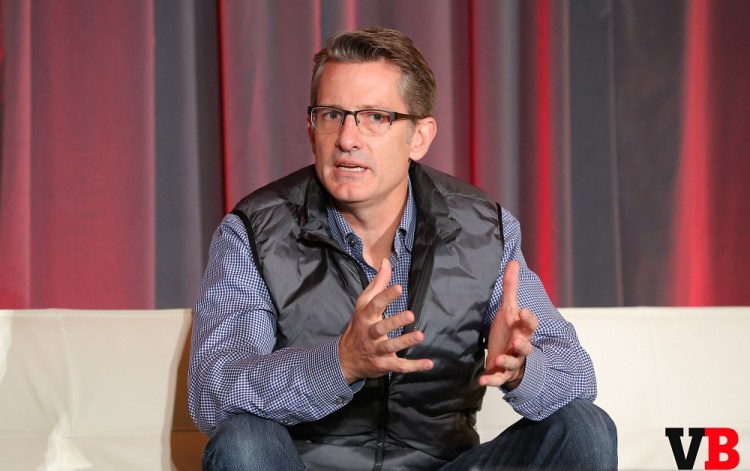Click here for all of our GamesBeat Summit coverage.
SAUSALITO, Calif. — Mobile game maker Kabam sent a wake-up call to the industry a couple of weeks ago when it announced that it would restructure to focus its 825 employees on making only top-10 mobile games, because that’s where the money is.
Chief operating officer Kent Wakeford went deeper into explaining that move to ruthlessly focus on big-budget mobile games today in a fireside chat at the GamesBeat Summit.
“The opportunity and the growth for us is at the top of the market,” Wakeford said. “We started a year ago and began a transformation of our business. We made some tough decisions.”
According to market researcher App Annie, the top mobile game — Clash of Clans from Supercell — makes more than $80 million a month. In 2012, the top game brought in $4.6 million a month. That’s a 1,750 percent increase. Meanwhile, the top 100 game generated $1.2 million a month in the first quarter of 2015, compared to $311,000 in 2012. That’s a 295 percent increase.
To Wakeford, that means that the revenue in the industry is concentrating at the top, and it is no longer a viable strategy for a large game company like Kabam to launch and operate top 100 games. The top game makers are gaining a structural advantage in marketing as a result.
Last year, Kabam launched 18 games, but it will only do four this year. It divested its social game business on Facebook’s desktop client because it didn’t have potential for a billion-dollar business.
“Capturing the hearts and minds of consumers at the top of the market is a challenge,” he said. But creating great teams and eliminating distractions for them is key to that as well.
Wakeford noted that marketing is a big part of the answer. If a game makes $80 million a month, the creator can spend $16 million a month on marketing. For the top 100 company, the marketing budget is only $240,000. That’s the difference between an app that you can advertise everywhere and one that barely gets noticed.
“We had a battle royal of the last Super Bowl with Kate Upton going head-to-head with Liam Neeson” in ads for the mobile games Game of War: Fire Age and Clash of Clans, Wakeford said.
“You’re already seeing that,” Wakeford said, as to the pattern of the console market unfolding in the mobile game market.
Ian Sherr, executive editor at Cnet and the moderator for the talk, asked about the counterpoint of viral games such as Angry Birds, which came out of nowhere.
“[Angry Birds maker Rovio] got huge recognition, but there are so many shifts in our business,” Wakeford said. “They owned the paid download space in 2010, but they didn’t adapt when the market shifted” to free-to-play games.
For the Android market, excluding China, the top five games in the first quarter of 2012 had a 10 percent market share, or $42 million in revenue. In the first quarter of 2015, the market share for the top five was 22 percent of the overall games market, or $926.5 million. By comparison, the top five console games in the U.S. had 13 percent market share in 2000, according to market researcher NPD. In 2014, the top five console games had 24 percent of the market. That suggests we’re seeing the same movie play out in the mobile game business.
Kabam is accordingly focusing on Fast & Furious, Marvel: Contest of Champions, Spirit Lords, and other big titles, some based on Hollywood licenses or on original intellectual property.
Wakeford also emphasized the importance of China in the new game market. Market researcher Newzoo announced that in 2016, China is expected to shoot past the U.S. in mobile revenue at $7.7 billion versus $7.3 billion. By 2017, China’s mobile games will generate $9.3 billion, compared to $8.2 billion for the U.S. And that’s why Kabam is launching big titles like its Marvel game into China.
VentureBeat's mission is to be a digital town square for technical decision-makers to gain knowledge about transformative enterprise technology and transact. Learn More

